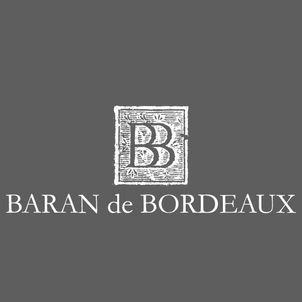A Coastal Barn: French Soul on the Coromandel Peninsula
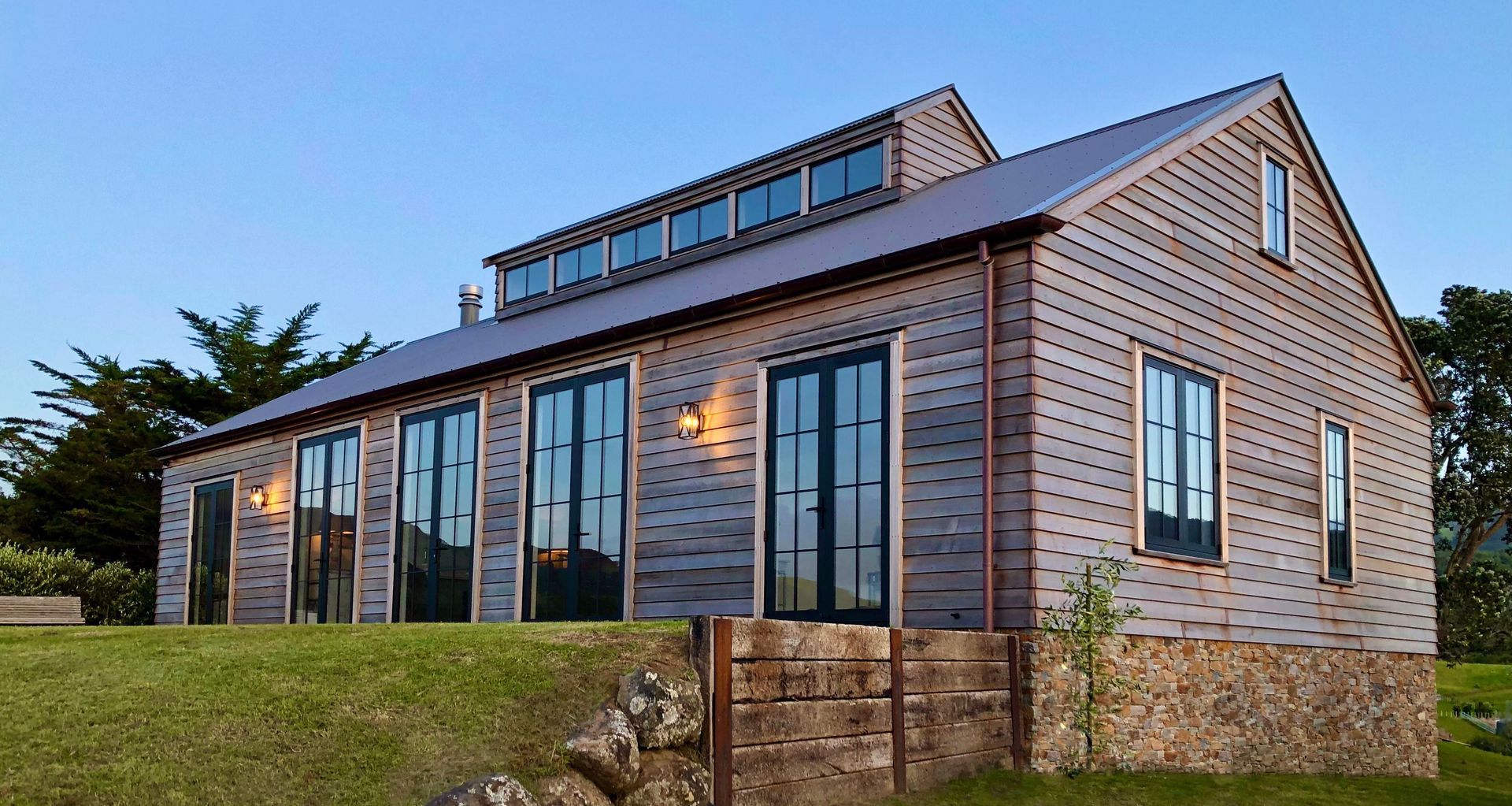
From a distance, the structure could be mistaken for a working farm building; simple, pure, and honest in form. No sprawling decks, no glossy architectural gestures. Just a rectangular barn clad in silvered cedar weatherboards, its grain worn soft by salt air. The main opening, an evocative pair of antique French wine cellar doors, hints at what’s to come inside: a dialogue between rustic New Zealand simplicity and centuries-old European craftsmanship, styled at the intersection between Provence and the Hamptons.
“We didn’t want it to feel fussy and decorated— we wanted it to feel as if it had always been there,” says Chrystelle, who, along with Nick, designed every element of the project, from the overall form to the smallest iron hinge.
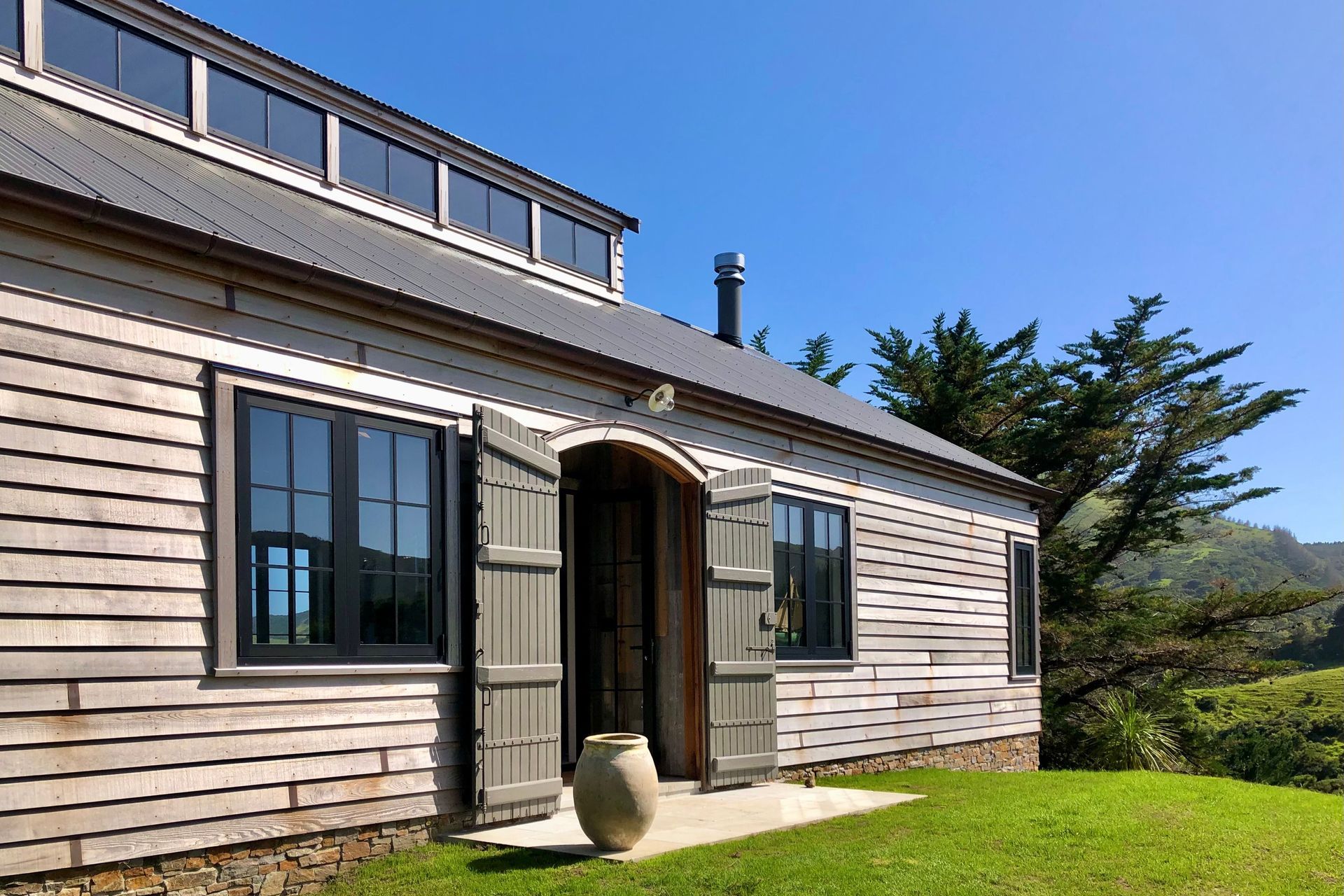
Inside, the atmosphere is both raw and deeply refined. Stone floors imported from the south of France ground the space with cool solidity, while the ceiling sarking, reclaimed barn cladding, wraps the interior in warmth and history. The couple even painstakingly aged the locally grown and milled pine beams by hand, using techniques generally found in expert antique restoration work. The result is uncanny: a newly built structure that feels like it has weathered a century of coastal storms.
Running down the spine of the open-plan living area is a glazed clerestory, a subtle but transformative architectural gesture. It floods the central space with shifting daylight, illuminating the hand-hewn beams and casting a soft glow over the stone floors below. It’s a detail borrowed from working barns and warehouses of the 19th and early 20th centuries; practical, honest, and perfectly in keeping with the building’s restrained authenticity.
Everywhere you look, there’s a story. A 19th-century steel boiler has become a coffee table. A giant sunburst mirror made from 19th-century French zinc roof tiles hangs over the simple antique stone fireplace, originally from a French farmhouse. Even the smallest details — a ceramic oil jar, an enamelled tin candleholder — are chosen for their honesty and patina. “We wanted everything to be real,” says Nick. “Not just things that look old, but things that carry the marks of use and time.”
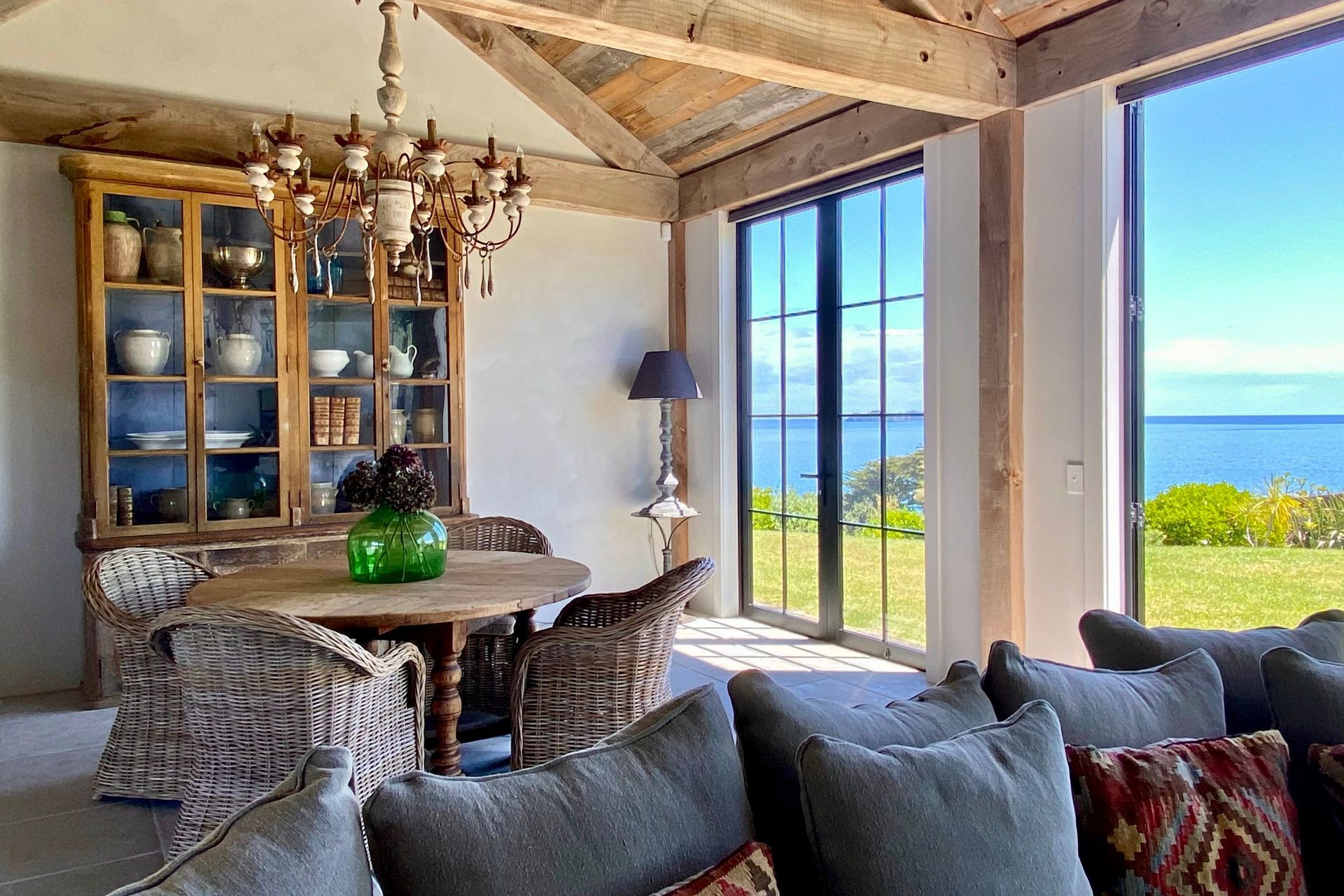
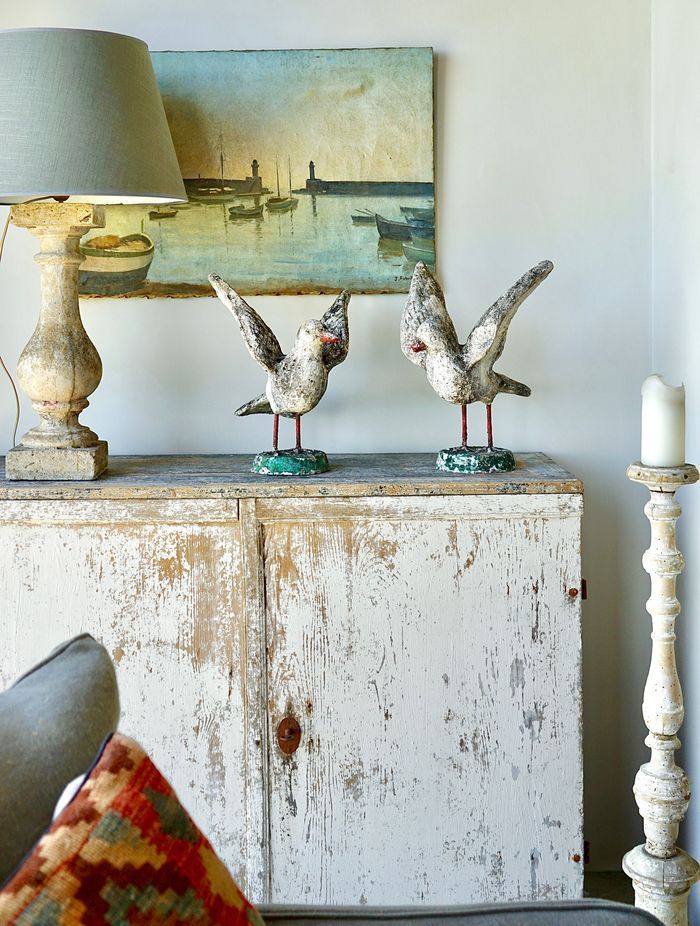
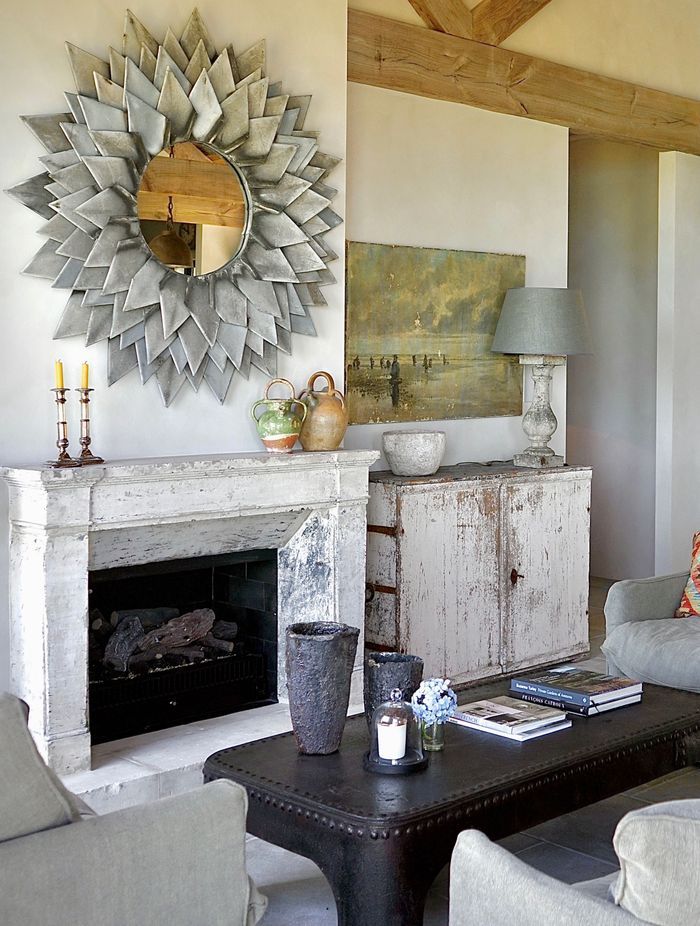
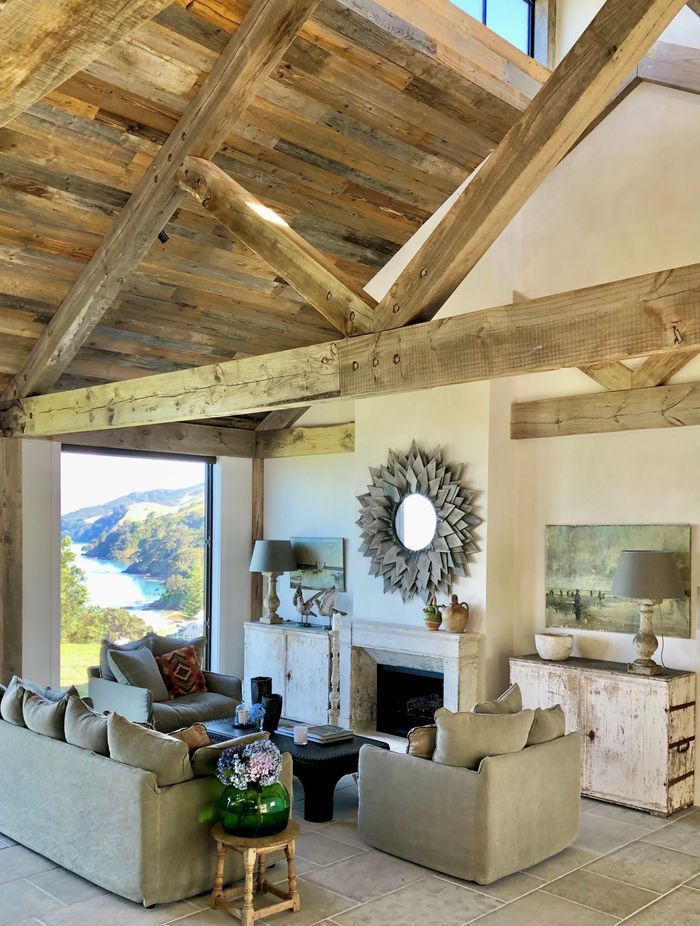
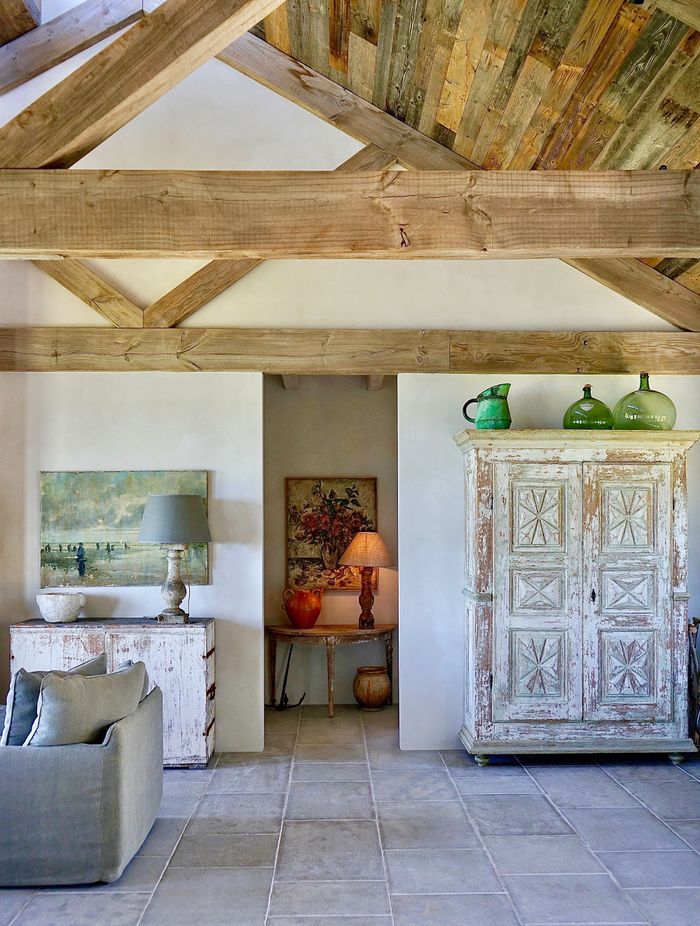
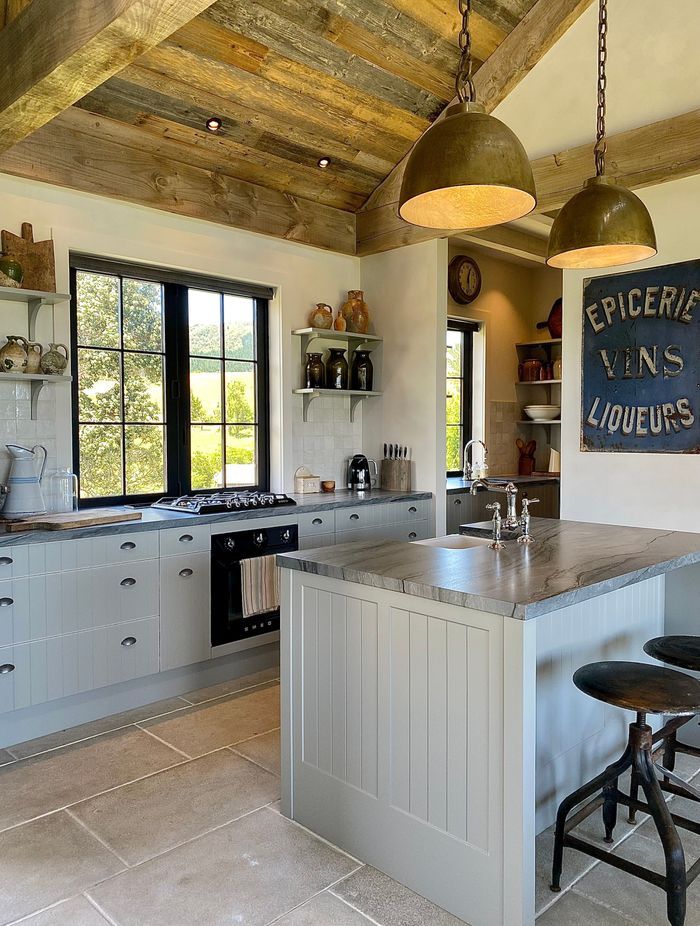
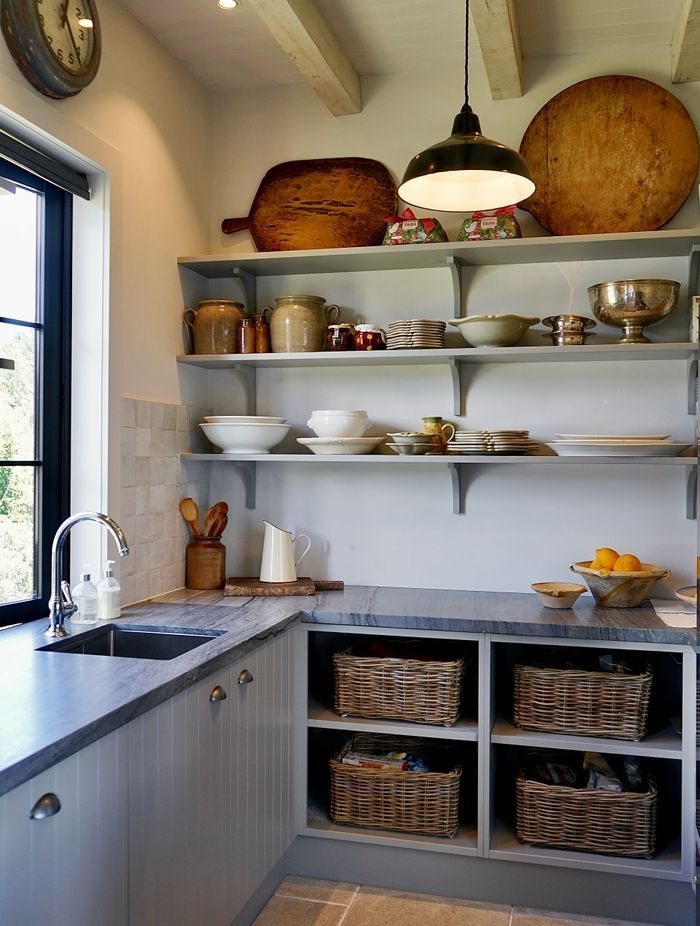
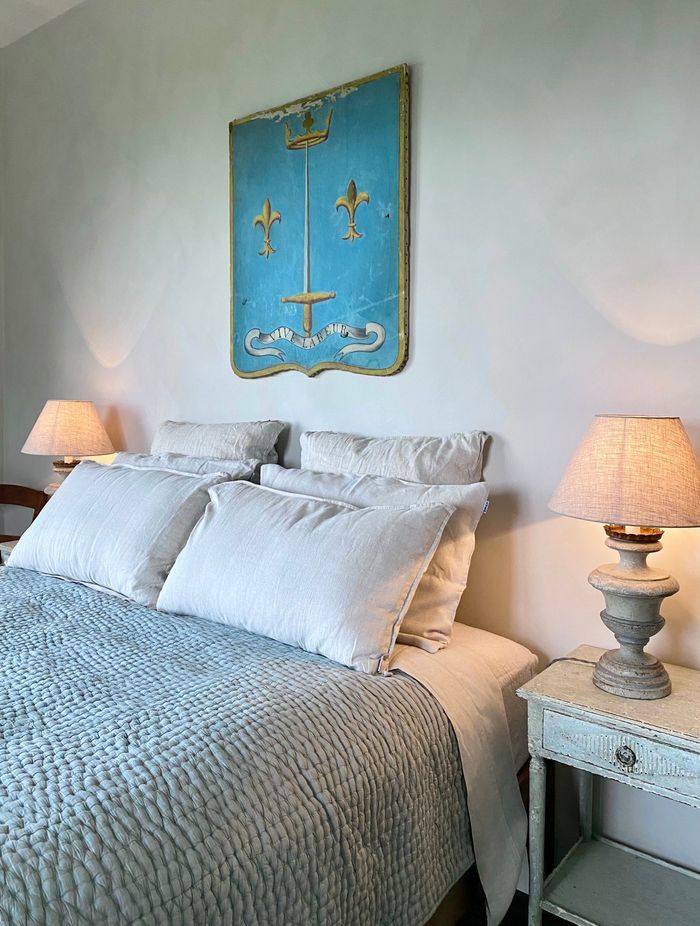
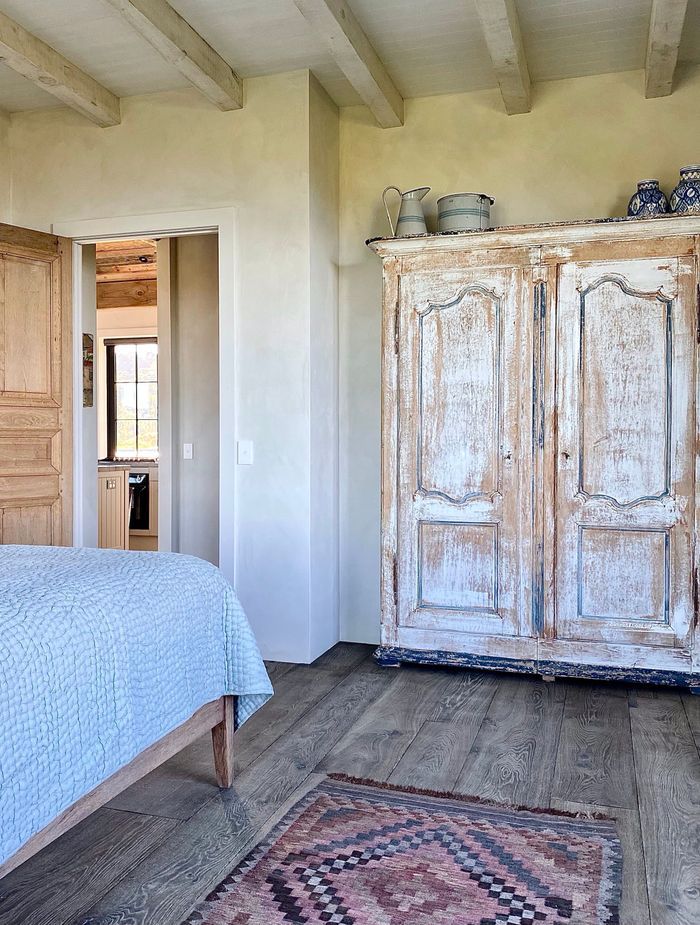
Despite its old-world palette, the house is resolutely modern in spirit; a minimalist’s approach to the rustic. There’s restraint in every gesture: no clutter, no excess. The view does most of the talking, rolling out across the lawn and down to the vast Pacific beyond. The openness of the design connects the home to the land and sea, making it feel less like an object on a hilltop and more like an extension of the landscape itself.
In an age when so much architecture chases newness, this hilltop barn celebrates the opposite: the beauty of the worn, the humble, the handmade. It’s a love letter to craft, memory, and the timeless allure of materials that tell their own stories.
Learn more about Baran de Bordeaux here
